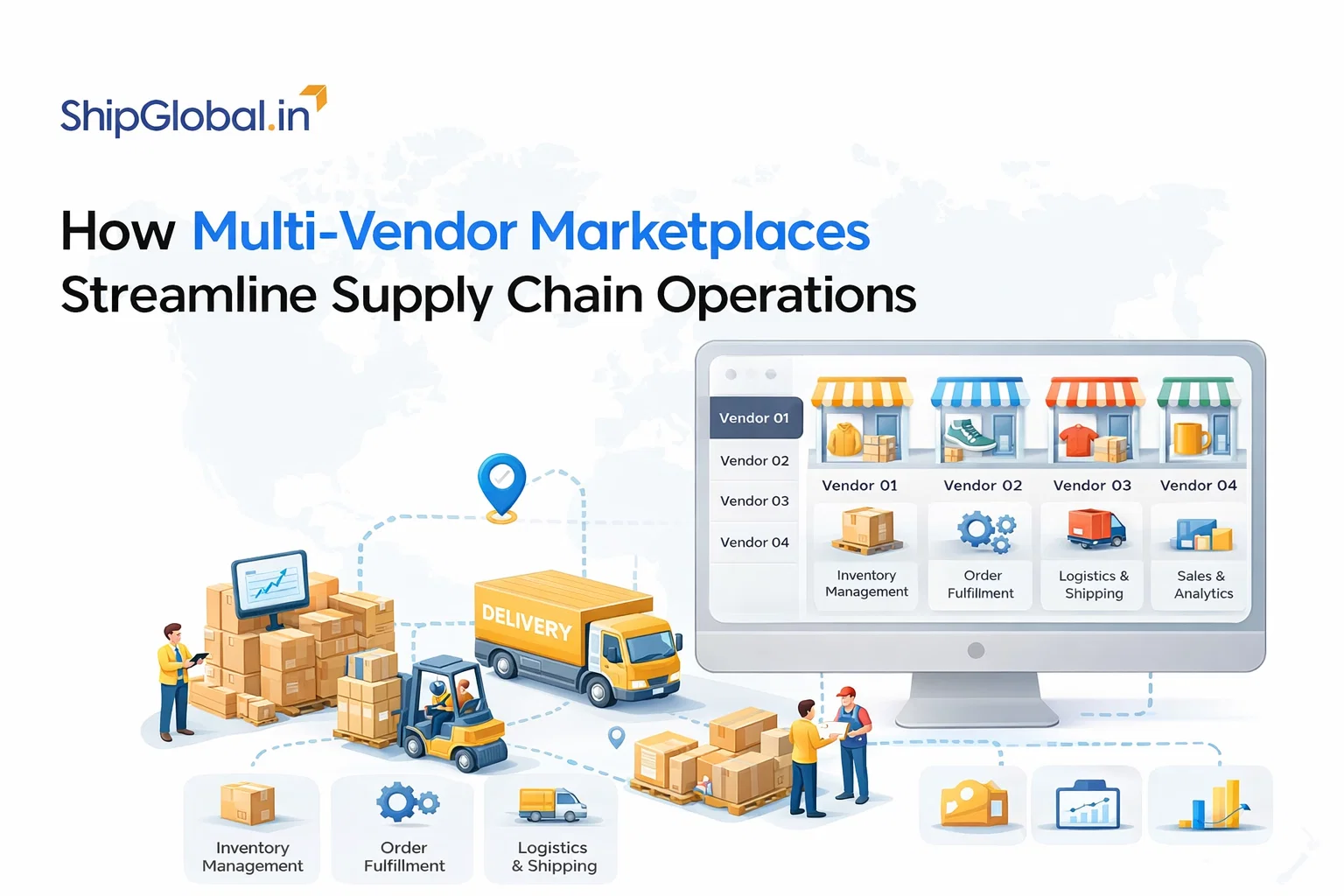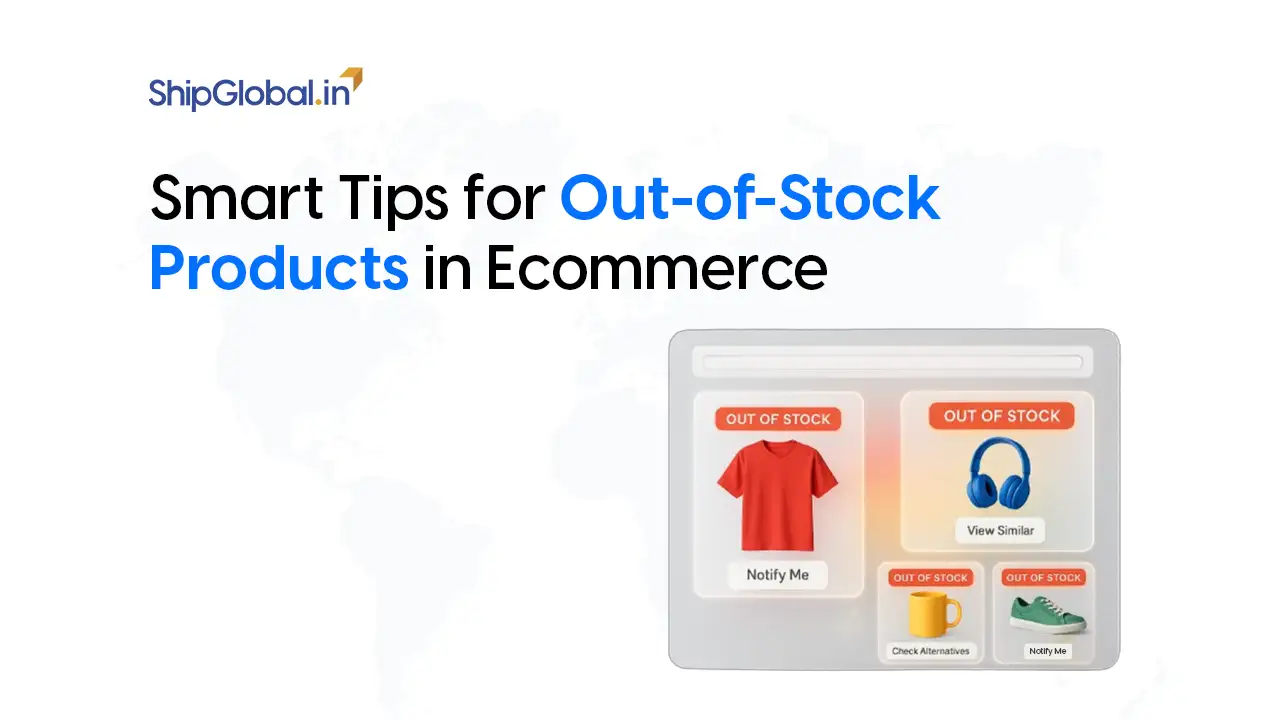The rapid growth of e-commerce business demands a strong global reach. Shipping internationally from India involves multiple steps that seem to be complex. It goes through the process of customs clearance before reaching its final destination. This includes a lot of documentations, compliance to regulations, and payment of duties, taxes & fees.
Customs clearance doesn’t have to be complicated. Collaborating with the right international logistics partners can streamline the customs clearance process for you. To simplify international courier from India, you would have to follow some essential tips and tricks. First, we have to understand the customs requirements and then explore some tips to manage customs clearance when using international courier services from India.
Customs Clearance: Door to International Shipping
International shipping from India requires many processes to ensure compliance with global trade rules and regulations. Customs clearance is one of the most crucial steps for global shipping of your products. The verification of the products and applicable duties and taxes are necessary for the import or export of the products. Failure to complete the customs clearance process may result in either shipping delays or rejection of your products. Let’s go through the customs clearance process-
Documentation
Submission of required documents is a significant part of customs clearance. The following are the documents that are required at the time of customs clearance:
- Commercial Invoice: It includes information describing seller and buyer details, rate of shipping, terms and conditions, etc. of your shipping item. A commercial invoice is a brief description of your products. It is a crucial component for a simple customs clearance process.
- Packing List: This list consists of details like the weight, volume, or dimension and complete packaging details of the item.
- Bill of Lading: This certificate is issued by your courier partner. It provides shipment details such as shipping products, destination, delivery time, etc.
- Certificate of Origin: It is an official document certifying origin of country of your products.
- Exporting License: Exporting products is such a sensitive task. So, it is obvious that customs officials will ask for an export license. This document authorizes to export your products internationally ensuring compliance with regulations and legal requirements.
Additionally, customs clearance may also require other licenses and permits, depending on the nature of the shipments and the regulations of the destination country.
What’s Next? Multiple-Step Customs Clearance Process!
Preparation of Customs Clearance
The next step is to begin preparing for customs clearance processes. In this, all the documents that you have submitted are aligned to make things clear and simple. Documents include commercial invoices, bills of lading, packaging lists, certificates of origin, etc. Customs authorities then move to the next step of verification and examination of your products.
Examination and Verification of Products
The customs authorities further proceed to verify and examine your products to ensure compliance with all regulatory requirements. They verify the information you provide in the declaration of the item. The customs authorities use many methods like physical inspections, X-rays, etc. to examine and verify your products.
Duties, Taxes and Fees Assessment
Duties and taxes are imposed on the products by customs authorities based on laws and regulations. These can be asked in terms of VAT (Value Added Tax) and the most renowned GST (Goods and Services Tax).
Customs Clearance
Once the payment of duties and taxes are completely cleared, your products are shipped to their destination. Customs clearance ensures the effortless movement of products across the borders further.
Delivery of Products
Finally, the products are delivered and they reach their final destination.
Customs Clearance – Things to Keep in Mind
The following things can help you have a simple and easier customs clearance process:
- Proper Documentation: A lack of proper and precise documents can lead to some shipping delay in the process or rejection of your products. Commercial invoices, bills of lading, packaging lists, certificates of origin, and many more permits are the documents that must be prepared properly.
- Shipping Bills: Make sure that you do not forget to fill shipping bills meticulously. By ICES or ICEGATE, you can file the shipping bill online. Failure to get shipping bills can lead to hurdles in the customs clearance process.
- Post Clearance Audit: To accelerate customs clearance process, transit time, and enhance compliance to regulations make sure to have a PCA (Post-Clearance Audit).
- Classification of Products: The classification of products must be done based on duties, taxes, special charges, etc.
- Reliable International Shipping partner: Always choose reliable and trusted international courier partners from India. Companies like ShipGlobal.in, DHL, FedEx, UPS, Aramex, etc. offer comprehensive shipping services that can make customs clearance and delivery simple for you.
- Self Assessment: With deep research and analysis, you can check and self-assess the taxes, charges, and duties expected to be charged. Moreover, with proper self-assessment, the declaration and classification of products can be done.
FAQs for Customs Clearance
Depending on the item, the customs clearance can take a time from just a few hours to several days. Sometimes, it can take about some weeks for customs clearance in some exceptional cases. This happens due to the long hours invested in the examination and verification of the information provided by you.
There is no selective list of goods that require customs clearance. Customs clearance is a mandatory process for almost all items.
Yes, if there are any concerns about the products or may be further inspections or additional documentation are required by customs officials.








